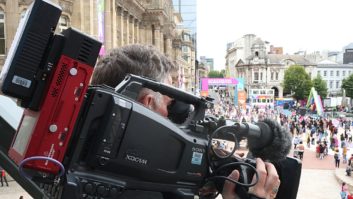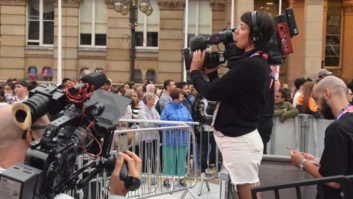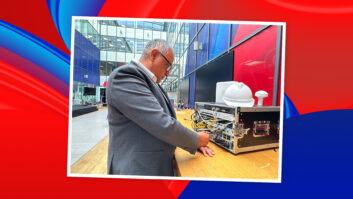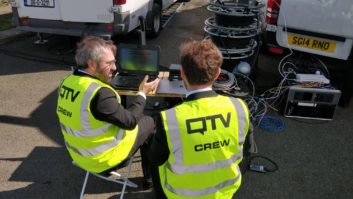During the Commonwealth Games, the BBC tested 5G standalone non-public networks to provide live pictures from the centre of Birmingham.
Ian Wagdin, senior technology transfer manager at BBC R&D, talks to TVBEurope about what happened, and the lessons learnt.
Why did you take the decision to trial using 5G during the Commonwealth Games rather than an event like the Women’s Euros?
The Commonwealth Games is an ideal event with lots of activity over a long period from a fixed location. We knew we would have the ideal test conditions but also the ability to plan ahead and work with various teams to deliver their requirements. We started thinking about this trial before Christmas and worked with multiple teams both internally and externally to deliver a complex trial.
Had you done any testing before The One Show broadcast?
We worked with BT and Vislink/Mobile Viewpoint to test the theory in the labs. We have also done some work on our own NPN in partnership with the University of Strathclyde. Up until now, these have been more focused on low latency applications for radio cameras, rather than the contribution workflow and how you might deploy this type of solution to support newsgathering and colour pieces around a major event. We have also piloted similar projects in partnership with the IBC Accelerators, but all of these have been one-off isolated trials using bespoke technologies and not a multiday deployment using commercial equipment.

Was that the first time 5G has been used on a non-sport broadcast?
We have used the public 5G networks since they became available in 2019, but this is the first time that we have deployed a standalone non-public network of this type. Public networks do provide a step up in the current technology, but they suffer from some limitations in that they are often reliant on 4G cores as well as being used by the public. By deploying the network in this way, we can guarantee quality of service as well as tune the network for greater uplink capabilities. We are also able to tune our coverage area so we can be sure of where our cameras will work and where they may be less reliable.
Who were your partners on the trial, and why did you choose to work with them?
The network has been provided by BT Media and Broadcast and the camera encoders by Vislink’s Mobile Viewpoint. BT are keen to explore the commercial and regulatory model for this type of solution and Mobile Viewpoint have a long history in bonded networks as well as the Vislink expertise in broadcast radio cameras, which means we could test multiple aspects of the solution.
Were you able to use network slicing?
We did not need to deploy network slicing as part of this trial as we only had two devices with a dedicated uplink of 150 Mbps and there would have been no benefit in slicing the network. We are working on other projects that do benefit from slicing both on public and private networks.
How did the trial go, were there any surprises?
The trial went better than expected with coverage proving more robust than we had anticipated. We were also able to explore behaviours such as cell hand over and roll over to the public network. As with all experimental technologies we wanted to measure a lot of ‘edge ‘ use cases. Mobile networks behave differently from traditional broadcast diversity networks and this led to some issues with cell handover – we are working to better understand how this could be managed.
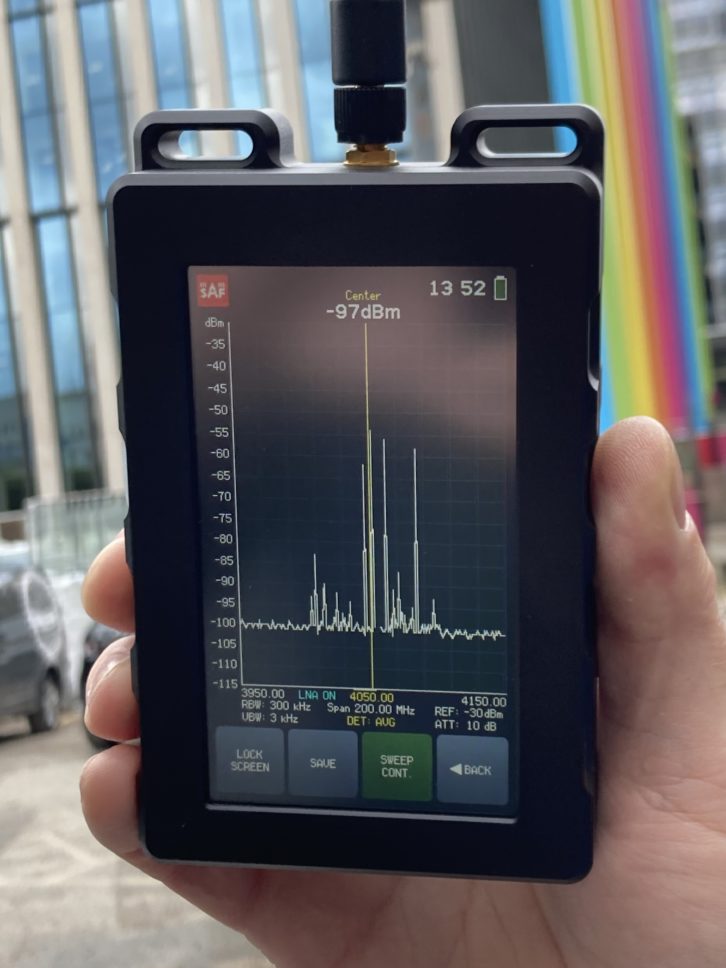
What was the biggest challenge?
The biggest challenge with this type of project is to define and keep within scope. We took some conscious decisions to work on areas that had not been tested to date and not replicate previous work that has been done previously. As an industry, we have been very joined up with lots of sharing of outcomes though groups such as 5G MAG and the IBC Accelerators, and we are working with multiple partners to identify what worthwhile tests and trials look like.
Did you have RF backup in case of any problems?
As this was an R&D trial, we were clear from the beginning that we were not broadcast critical. The BBC deployed both RF and bonded cellular over the period of the games to support its broadcast requirements.
Do you have plans to test the technology again soon? If so, when and what for?
We are working on several 5G projects including the 5G Records project, which we will show on the EBU stand at IBC, as well as on some IBC Accelerator trials that build on what we have learnt from previous years. We also have our own NPN which we would like to use. We have proven the technology but there are some commercial and regulatory issues that need to be better understood to support this type of deployment. We are in close conversations with several broadcasters on how this technology may be deployed in the future.
What do you view as the future of 5G in broadcast production?
There are several areas where 5G could benefit production. 5G is an IP based technology and while traditional RF is very well understood, as we move from digital to IP based workflows we want to start to take advantage of this. We want to explore how we may be able to use the backhaul for reverse channels such as camera control, talkback, prompters, tally lights etc, as well as how we can integrate with the IP solutions we are building in our newest facilities.
This trial was more focused on the contribution side of the workflow rather than production. There is potential here to deploy multiple cameras on this type of network and bring them back to a remote production hub, which would bring increased reliability when we deploy this type of workflow when measured against bonded cellular.
